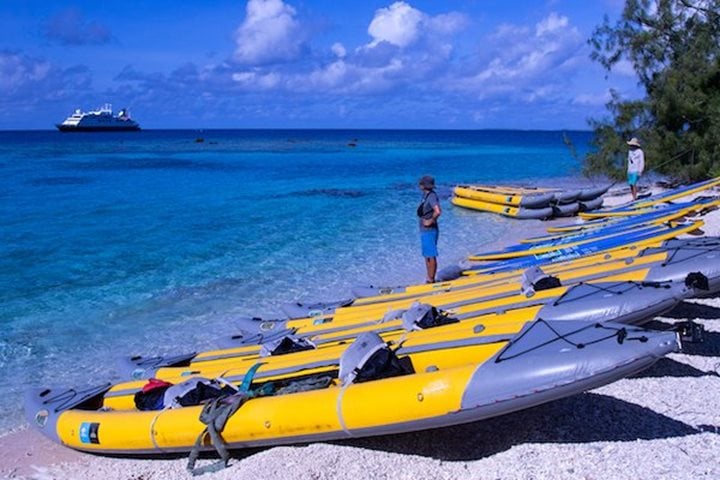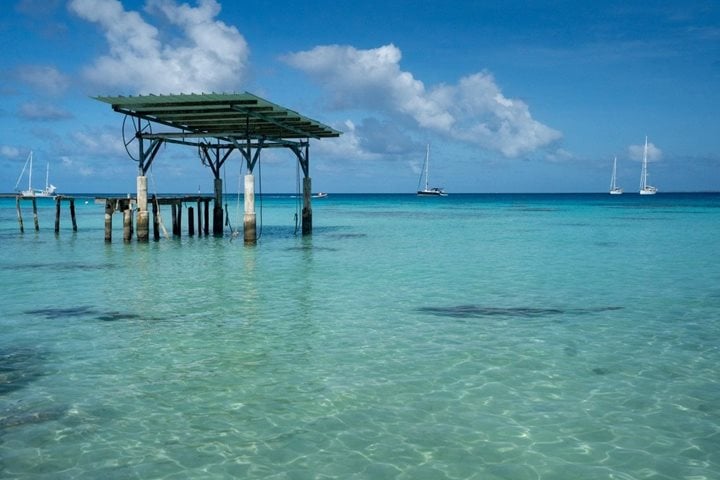National Geographic Orion arrived at the southern end of Fakarava Atoll around midmorning. Fakarava Atoll lies in the western region of the Tuamotu Archipelago and is the second largest atoll in French Polynesia, after Rangiroa. Fakarava Atoll is the rough shape of a rectangle and has a length of about 60 km (37 mi) and a width of 21 km (13 mi). This includes a wide and deep internal lagoon with a surface area of 1,112 km2 (412 mi2), compared to a narrow surrounding band of islets with a total land area of only 16 km2 (6 mi2). The islets, typical for a coral atoll, barely rise above sea level and are densely covered with lush, green vegetation.
Fakarava has a very rich marine ecosystem and has been designated as a UNESCO Biosphere Reserve in order to ensure its preservation. The atoll reserve encompasses Fakarava Atoll and six nearby atolls, all of which comprise a region in which local communities are actively involved with governance and management, research, education, training, and monitoring. This promotes socio-economic development as well as essential conservation of the atoll’s biodiversity and existing wildlife. Fakarava is home to several rare species of birds, interesting plants, bizarre terrestrial crustaceans, and an abundance of marine life. The expression of flora and fauna is enhanced in the quaint company of villages, old coral-structured churches, and amiable hosts.
There are two major channels that connect the massive interior lagoon with the ocean, and as one would suspect, a tremendous amount of water moves through them during the various tides. Our activities today were focused around the tidal movements within the South Passage. With a strong incoming tide, most guests opted for an exciting drift snorkel that transited the pass. Several groups of us in turn jumped into the water from snorkel Zodiacs near the mouth of the pass and then got swept quickly into the lagoon. It was an amazing way to view the vast growths of coral, multitudes of colourful coral reef fish, as well as MANY sharks! Huge schools of humpback snapper were observed, and everyone was impressed with the large Maori wrasses. Our scuba divers went in for an equally thrilling dive within the current, but of course much deeper, which enabled them to capture some of the most stunning footage of fish we’ve seen this week.
The tidal movement changed during lunch, and we conducted more drift snorkel operations during the afternoon—only this time the current was running outward from the lagoon. And, of course, the scuba divers went out again for another deep-water dive. In the meantime, we offered some glass-bottomed Zodiac tours for those not taking part in the drift snorkel adventure. Fakarava Atoll is world famous as a diving mecca, and it has certainly afforded all of us the experience. During the day’s operations, our vessel drifted off shore near the South Pass, since the water surrounding the atoll is much too deep for her to set an anchor on the bottom.







